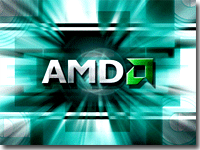AMD Gaming Executive Departs, Joins Nvidia
It is no secret that AMD's board of directors and new executive ranks have plans to change the company into something very different that what the company once was. However, the pace at which former key staff is departing is rather surprising.
Bob Feldstein, vice president of business development and in charge of AMD's Boston Design Center, has left the company and is joining Nvidia as vice president of technology licensing at Nvidia. During his time at AMD, he was responsible for deals that included the integration of ATI graphics into the Nintendo Wii and Xbox 360. Feldstein is the next in line of several other high profile departures, including John Bruno, Godfrey Cheng, as well as higher level executives that included Rick Bergman and Nigel Dessau.
While Bergman and Dessau are rumored to have been layoffs, and Bruno was accepted as a casualty during the layoff round late last year, key staff such as Cheng and Feldstein went to rivals or moved deeper into the field AMD is trying to reach. Bruno is now at Apple, Bergman is CEO of Synaptics, a developer of human interface solutions. Cheng, formerly a director in AMD's gaming division, is vice president of marketing at Synaptics.
Contact Us for News Tips, Corrections and Feedback
Get Tom's Hardware's best news and in-depth reviews, straight to your inbox.

Douglas Perry was a freelance writer for Tom's Hardware covering semiconductors, storage technology, quantum computing, and processor power delivery. He has authored several books and is currently an editor for The Oregonian/OregonLive.
-
slabbo if they are just gutting the management, that's fine. Just don't touch the smart engineers designing the good stuff from the company or they'll go belly up fast!Reply -
uglynerdman amd is no longer AMD just in name only. crappy products galore. no future in anything. Dont think im a random hater i been a amd fan since k6- phenom. just they fell off and theyre going into a very unprofittable direction also. seeya amd.Reply -
sp0nger So if they dont want to compete with Intel, and thier changing thier GPU buisness too, where are they planning on finding revenue? Don't they primarily do CPU/GPU? While i dont think Nvidia is challenging them on the budget GPU side of things too much Intel definitely is with thier budget CPU's.Reply
in the words of p'diddy
They need to think that stream, they need to thinkin it the f' up -
sp0nger Actually, Nvidia has done a good job at putting pressure on AMD with thier lower cost GPU's too so maybe AMD is all around F'dReply -
dayblade yeah - if you see their stock price today - they have been on downward slope all summer. Not good as I too have been a fan since the K6-III days. They have been solid products up until the tablet/mobile phone craze - and now AMD seems to have lost their way. Really hope the new regime can turn this around but sure seems like alot of their resources are being shown or walking out the door.... :(Reply
-
dudewitbow sp0ngerSo if they dont want to compete with Intel, and thier changing thier GPU buisness too, where are they planning on finding revenue? Don't they primarily do CPU/GPU? While i dont think Nvidia is challenging them on the budget GPU side of things too much Intel definitely is with thier budget CPU's. in the words of p'diddyThey need to think that stream, they need to thinkin it the f' uptheir attention is making affordable chips in a non normal environment outside of gaming, like powering up screens on things like casinos and such rather than push for the fastest everything.Reply -
teh_chem Was AMD officially selected as the gpu provider for the next xbox and nintendo consoles? I remember reading "rumors" but I can't recall if they were confirmed.Reply
Interesting that this guy went from the director of the gaming division at AMD to the VP of tech licensing. -
dudewitbow teh_chemWas AMD officially selected as the gpu provider for the next xbox and nintendo consoles? I remember reading "rumors" but I can't recall if they were confirmed.Interesting that this guy went from the director of the gaming division at AMD to the VP of tech licensing.Reply
for the WiiU, its most likely going to be an amd card(whether if its based of a 4870 or 6770 rumor i still dont know), for the other 2, they are still under the hood about how its actually going to turn out and nothing is totally official as they still have years before their release as nintendo has to prep for a holiday season during November release. -
airborne11b I agree with Otacon72. The engineers failed. AMD used to be amazing and competitive back in the slocket days! Now they are a joke. They haven't made a decent CPU in over 5 years now, maybe longer. Their GPUs are decent enough, but you can get a better performing, better supported Nvidia GPU for $30 to $50 less than AMD's offerings... The engineers should have been fired a long time ago.Reply
And for those who missed the memo, AMD CEO called it quits months ago. Said they were going to "redirect" their focus on low-end market and stop trying to compete with intel in the enthusiast / high end market. -
gilgamex uglynerdmanamd is no longer AMD just in name only. crappy products galore. no future in anything. Dont think im a random hater i been a amd fan since k6- phenom. just they fell off and theyre going into a very unprofittable direction also. seeya amd.Reply
You must be a random hater because the entire 4000, 5000, 6000 & 7000 series of graphics cards must have completely gone over your head. You could argue Nvidia would eventually top them or be a bit better from the getgo, but they are fantastic cards for their day. A 4870 was a value steal, 5870 held the crown for a solid amount of time and the following 6-7 series were always competitive in most all price ranges.
